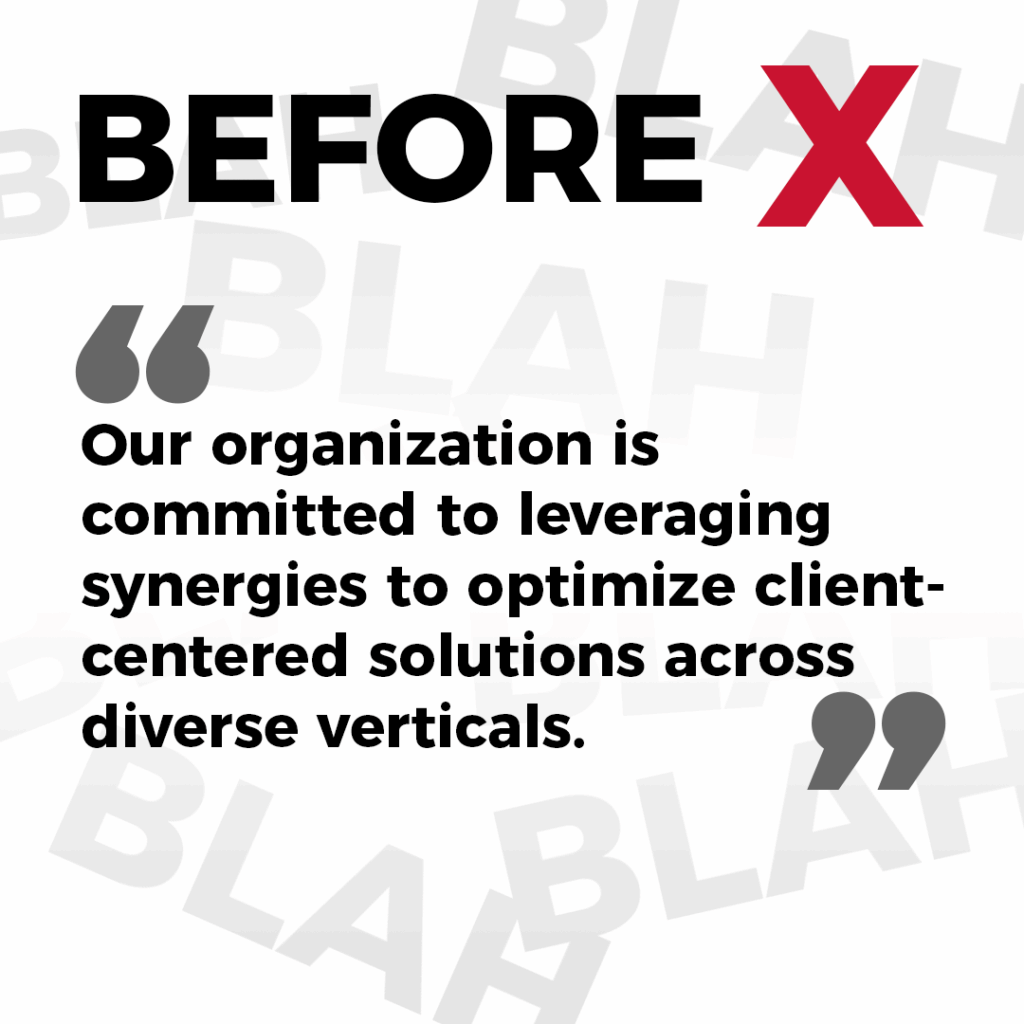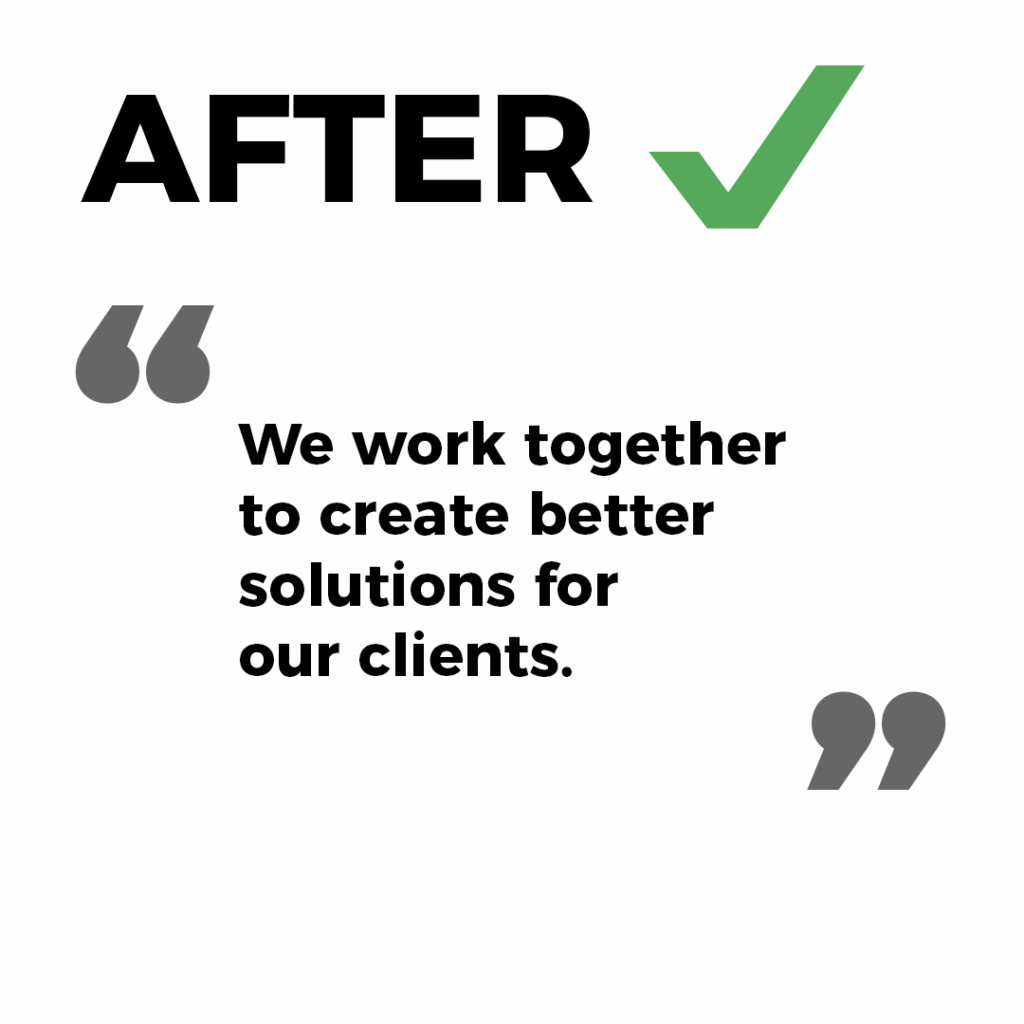In marketing, you only have seconds to grab someone’s attention. That’s where plain language comes in—it’s your secret weapon for helping people understand and care about your message.
The Plain Language Association International (PLAIN), a Canadian-based nonprofit organization with members from over 30 countries developed this plain language definition:
A communication is in plain language if its wording, structure, and design are so clear that the intended audience can easily find what they need, understand what they find, and use that information.
Plain language covers more than the words we use. The term also includes removing barriers that may prevent someone from hearing or seeing your message. It ensures that the format you choose for the message is appropriate, organized, and clear.

In this blog, we’ll talk about the writing portion of plain language. Stay tuned for a follow-up blog where we’ll cover information design.
When your words are easy to understand, people can focus on your meaning and act on your information. For instance, if the instructions are plainly written, someone learning English may use a website to pay a bill or find medical help. Plain language is a powerful tool, making your message more accessible and memorable.
No matter the format—speech, web content, or printed material—your message should be clear to everyone, including those who aren’t experts or are new to your field. By using straightforward language and simple layouts, you’re not just being considerate; you’re making life easier for anyone who encounters your message.
Let’s take digital communication as an example. Building an accessible website means paying attention to things that help users, like clear headings, short sentences, and readable fonts. Ask yourself: Will a screen reader interpret your words correctly? Are your colours easy for everyone to see? By thinking about these details, you help all users engage with your message, which is the essence of effective communication.
Whether you’re emailing, giving a talk, or designing a site, your goal is to be understood by everyone. Avoid jargon, break up complicated ideas, and use simple sentences so your audience stays with you.
When you keep your language and layout clear, you make your information more inviting. Plain language helps your message reach further, as people can easily share it with others. This act of sharing builds trust, as the message comes from someone the recipient knows. Because of that, your message is more likely to be received positively and remembered.


Two additional key factors in the plain language process are: identifying your target audience and determining the most effective methods to engage them. After you complete these steps, you can proceed with drafting your communications.
I recently shared in an interview that “…writing without knowing your audience is like designing blind.”
My partner, Alex, and I believe that knowing our audience is a fundamental truth, and we use it to guide communications for Saltmedia and our sibling company, IT Horizons.
It’s also important to remember that your audience is made up of individuals. Using broad terms like ‘audience’, ‘client’, or ‘customer' to describe the people using our services or products makes it easy to forget individual differences. It can lead us to make general assumptions. And we all know the problems with assumptions, right?
But it’s in the individual differences where the true magic lies. Recognizing them lets you tailor your messages for maximum clarity and impact. It helps you choose the words that resonate, so anyone who reads or hears them can identify with you. It’s kind of like the beginning of a good friendship or a positive working relationship.

Questions to answer before writing may include:
We’re all busy. And sometimes we wish we could get down to writing our messages, say what we need to say and move on. But a little planning goes a long way towards achieving our goals.
Planning and the planning process keep us focused on our audience. It’s a great way to check assumptions and manage biases, which have a sneaky way of creeping in regardless of our best intentions. It reminds us of the importance of staying curious and open during the research and writing process of communications.
Thinking about our audience and their needs helps your message become clear and more effective. When we put ourselves in our client’s shoes to better understand their world, we are showing empathy, which is essential to meaningful communication.
You may want to develop a formal plan to capture your thoughts and guide your activities. You can include who you are trying to reach, why you are trying to reach them, and what you want to say to them. And add detailed information about the best time and place (when and where) to deliver your message.
Using plain language isn’t just about picking the right words—it’s about making sure everyone gets the message. You need to know who you’re talking to, plan what you want to say, and pick the best way to communicate. You also need to consider any hurdles that might prevent people from seeing or hearing what you’re sharing.
When you use plain language, your messages are easier to understand, remember, and act on. It helps everyone, especially people unfamiliar with the topic or who speak another language. Keeping things clear and understandable builds trust and makes people more likely to use and share your information.
Download this Plain Language Cheat Sheet.

We live, work, and gather on traditional, unceded, and treaty territories of First Nations, Métis, and Inuit Peoples from coast to coast to coast. We’re committed to our collective responsibility to the original caretakers of this land and to listening, learning, and acting in ways that support reconciliation.